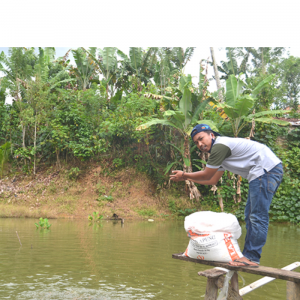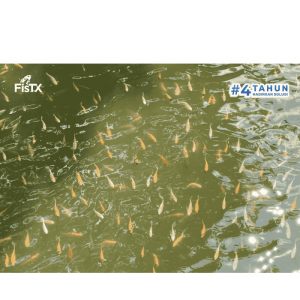
Farmed Tilapia See Growth, Meat Quality Boost From Nerolidol Supplement
| Tue, 26 Nov 2019 - 15:17

Adding supplemental nerolidol to diets of farmed tilapia improves fish growth and performance along with increasing meat quality, researchers say.
A team of researchers from the Federal University of Santa Maria, the State University of Santa Catarina and the Franciscan University, Santa Maria in Brazil explored the influence of both dietary free and nanoencapsulated nerolidol on the performance and fatty acid profile farmed Nile tilapia.
“The aim of this study was to evaluate whether dietary supplementation with free or nanoencapsulated nerolidol improves growth performance, meat antioxidant status and fillet fatty acid profiles in Nile tilapia,” the researchers said.
The researchers found that adding 1 mL nanoencapsulated nerolidol/kg of feed increased the final body weight and growth rate for fish compared to those on the control diet. Fish receiving the supplemented feed had lower lipid peroxidation levels and reduced reactive oxygen species in meat.
The meat antioxidant capacity for peroxyl radical was smaller in fish on diets supplemented with nanoencapsulated nerolidol compared to fish on the control diet, they said.
Catalase activity in tissue was increased while hydrogen peroxide levels fell for fish on diets with 1mL free nerolidol/kg of feed and feed supplemented with nanoencapsulated nerolidol compared to those eating the control diet.
All fish on supplemented diets displayed lower levels of saturated fatty acids (SFA) compared to results for fish receiving the control diet, they said. However, the total content of monounsaturated fatty acids (MUFA) increased for supplemented fish.
“It appears that nanoencapsulation of nerolidol exerted potent benefits for fish health, manifesting as improvement in growth performance and reduction in meat ROS [reactive oxygen species] and LPO [lipid peroxidation] levels in fish fed with nerolidol nanospheres,” the researchers said. “Both forms improved meat quality based on reduction of SFAs and increases in MUFAs, suggesting that dietary supplementation with nanoencapsulated nerolidol is a compelling approach to improving fish health and meat quality.”
Aquaculture is a rapidly growing food production sector globally, witnessing an average annual growth rate of 5.8% from 2000-2016 and providing about 80m tons of fish by 2016, the researchers said.
Aquaculture production provides a source of protein and essential micronutrients for humans, they said. Compared to terrestrial animals, fish is a source of essential fatty acids, including polyunsaturated fatty acids.
However, expanding aquaculture production has been accompanied by the use of semi-intensive or intensive farming systems, which are stressful conditions for fish that may increase the chance of disease outbreaks and high rates of fish mortality, they said.
“Enhancing fish health is a major concern of fish farmers; until some time ago, this end was achieved primarily using antibiotics; however, this practice is currently discouraged because of the emergence of antibiotic-resistant bacteria, environmental side-effects, alterations in microbial communities, and accumulation in edible tissues,” they said. “Today, the search for unconventional and more environmentally-friendly growth promoters as alternatives to antibiotics are compelling methods to promote animal health and well-being in order to sustain safer and more productive aquaculture.”
Why add nerolidol to fish feed?
Manufactured drugs are starting to be replaced with natural products and nutritional additives that enhance the antioxidant system, the researchers said. These include essential oils and their isolated compounds like sesquiterpenes.
“Sesquiterpenes are C-15 terpenoids that occur as hydrocarbons or in oxygenated forms such as alcohols, ketones, aldehydes, acids or lactones in nature; they are important constituents of essential oils, with many applications in fish production,” they said. “Nerolidol (3,7,11-trimethyl-1,6,10-dodecatrien-3-ol) is an aliphatic sesquiterpene alcohol with several pharmacological properties in mammals, including neuroprotective, trypanocidal, antimicrobial and antioxidant properties.”
No research has been done exploring the use of isolated nerolidol ub fish, but the compound is found in Lippia alba essential oil, which is used as a fish anesthetic, they said.
Previous research suggests that using nanotechnology or loading nerolidol into nanospheres could increase the compound’s antioxidant capacity, they said.
“Nanotechnology is a science devoted to the design, synthesis, characterization and application of materials that possess a functional organization on the nanometric scale (10−9 m); where the reduction of particle size at nanometric scale increases the particle reactivity and alters the pharmacological properties of active principles,” the researchers said. Nanotechnology is starting to be used to improve the “production, processing, storage, transportation, traceability, safety and security” for aquafeed, they added.
“Shah and Mraz (2019) reported that nanotechnology is a compelling alternative to avoid the excessive usage of antibiotics, for identification of new natural bioactive compounds that could be used as growth promotors,” they said. The technology can be used to improve the efficacy of bioactive compounds and provide for a targeted and sustained release.
The researchers’ hypothesis was that nerolidol’s antioxidant properties would improve fish health, boost Nile tilapia growth performance, improve meat antioxidant status and the fatty acid profile in fish fillets.
During the feeding trial, 200 Nile tilapia fingerlings received one of five trial diets for 60 days. The diets used a commercially available nerolidol and contained 38% protein.
The trial feeds included a non-supplemented control diet (Group A) comprised of meat and bone meal, soybean meal, corn and rice bran, the control diet supplemented with 0.5mL/kg of feed free (Group B) or nanoencapsulated nerolidol (Group D), or the control diet with 1 mL/kg of feed free (Group C) or nanoencapsulated nerolidol (Group E).
Fish were weighed and measured at the start and end of the feeding trial, they said. Weight gain, growth rate (SGR), condition factor (CF), percentage of fish survival and feed intake (FI) were calculated.
A selection of fish on every diet was collected at the end of the trial to sample muscle fillets, the researchers said. Tissue was assessed for meat reactive oxygen species (ROS), meat hydrogen peroxide concentration, meat lipid peroxidation levels (LPO), meat carbonyl protein content and meat antioxidant capacity against peroxyl radicals (ACAP).
Fish fillets were also checked for meat superoxide dismutase (SOD) activity, meat catalase activity (CAT), muscle protein content and fatty acid profile, they added.
Overall, fish receiving the diet with 1 mL/kg feed nanoencapsulated nerolidol had increased weight gain and a higher final mean weight compared to fish on the control diet, the researchers said. Tilapia on that diet had lower ROS and LPO levels compared to control group fish.
However, no major differences were noted based on diet for survival, feed intake or condition factor, they said.
“These data suggest that nanoencapsulation of nerolidol promotes fish health by promoting growth and reducing free radical production and lipid damage,” the researchers said. “Free and (particularly) nanoencapsulated nerolidol enhanced muscle/meat enzymatic and non-enzymatic antioxidant systems.”
Meat hydrogen peroxide concentration was reduced for fish on the 1mL free nerolidol/kg feed, 0.5mL nanoencapsulated and 1mL nanoencapsulated diets, they said. Fish on all diets had similar protein carbonylation levels.
Fish receiving diets with encapsulated nerolidol had higher meat ACAP levels and CAT activity increased for those fish and tilapia on the diet with 1mL free nerolidol, they said.
But there were no major differences found for SOD activity regardless of diet.
Supplementing diets with either type of nerolidol lowered total saturated fatty acid levels and increased the amount of monounsaturated fatty acids, they said. However, all fish had similar results for the sum of polyunsaturated fatty acids (PUFA).
Source : Feed Navigator






















